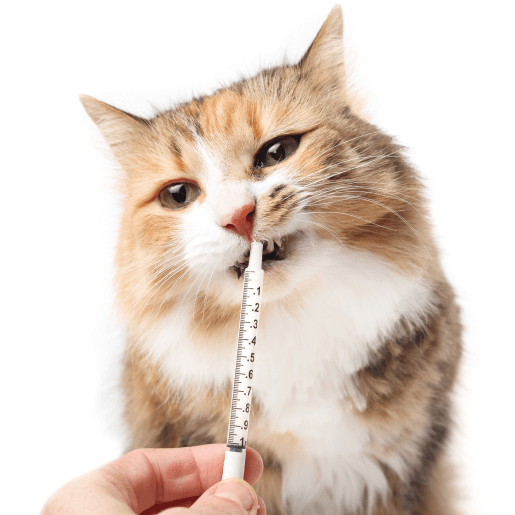Buprenorphine is an opioid pain medication most commonly in cats to manage moderate to severe pain, such as post-surgical pain or nerve-associated pain. It works by binding to opioid receptors in the brain and spinal cord to reduce the sensation of pain.
This medication is generally considered safe for short-term use and is often not prescribed for long term use.
Buprenorphine is classified as a controlled substance, which means it is regulated and can only be prescribed by a veterinarian with a DEA license.
Dosing
Buprenorphine is most commonly given to cats in liquid or transmucosal form, which is provided in a pre-measured syringe for easy and accurate dosing. Its effects do not last very long, so it is usually given every 6–8 hours. The exact dose and frequency will depend on your cat’s weight, medical condition, and the type of pain being treated.
Possible Side Effects
Most pets tolerate buprenorphine well. Side effects often resolve if the dose is adjusted or the medication is discontinued:
- Changes in behavior: Cats may become more vocal, restless, euphoric, or anxious.
- Dilated pupils: This is non-concerning.
- Sedation: This usually is mild and more likely at higher doses or if combined with other sedating medications.
- Incoordination: Wobbliness is usually mild and dose dependent.
- Gastrointestinal upset: Nausea or vomiting can occur uncommonly.
